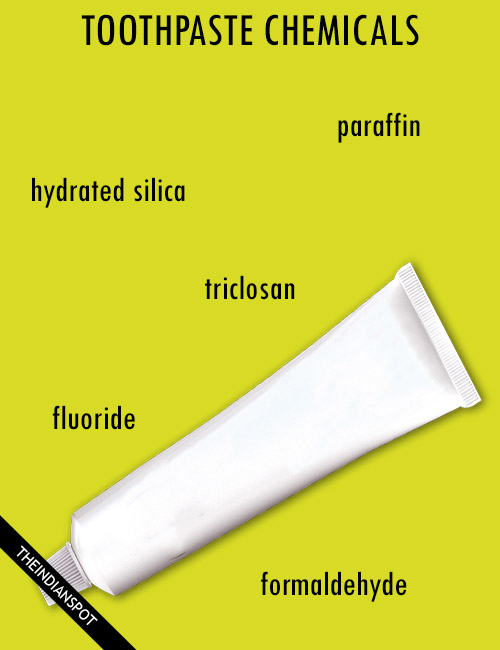You might not think much about the ingredients in your toothpaste compared to the ingredients in your food or even other personal care products, but those pea-sized dollops on your toothbrush twice a day add up. Every morning and night, you squeeze a small amount of toothpaste onto your toothbrush. But have you ever wondered what is in toothpaste that makes it clean your teeth? Most toothpastes share common ingredients, both active and inactive. Active ingredients are what help fight cavities and reduce your risk of gum disease. The inactive ingredients give the toothpaste its taste and texture. Toothpaste contains many potentially harmful ingredients, including some that can lead to serious long-term health problems. Here are some common toothpaste chemicals you need to know about:
 TRICLOSAN
TRICLOSAN
Triclosan is used in skin care products, deodorants, laundry detergents, mattresses, toilet fixtures, hand sanitizers, toothpaste, and more. This chemical has powerful antibacterial and antifungal properties, but it’s also been linked to numerous health problems. Triclosan impedes the thyroid gland, is likely an endocrine disruptor, and it may cause cancer. Triclosan is used in some of the most popular toothpastes.
FLUORIDE
Fluoride is an endocrine disrupter that calcifies the penile gland, and it can reduce thyroid and adrenal gland function. Fluoride increases cancer risk, causes damage to DNA, inactivates enzymes within the body, accelerates aging, disrupts the immune system, and should be avoided both in toothpaste and in water.
READ: Natural Toothpaste alternatives for Stronger and Whiter Teeth >>
FORMALDEHYDE
That same ingredient that coroners can’t live without can be found inside of your toothpastse tube. Formaldehyde kills all of those small bacteria that climb onto your teeth after eating or sleeping. If a large amount of formaldehyde is accidentally ingested, the result could be fatal. Severe formaldehyde ingestion results in jaundice, kidney damage, liver damage, and death.
DETERGENTS (SODIUM LAURYL SULPHATE)
It is important to have detergents in toothpaste because they help to provide foaming to occur when you brush your teeth. One of the most common detergents placed in toothpastes is sodium lauryl sulphate. SLS has even been linked to skin irritation and painful canker sores, with research suggesting an SLS-free toothpaste should be used for people with recurring sores SLS is also registered as an insecticide and may have toxic effects to marine life, including fish, insects, and crustaceans.
PARAFFIN
As slick as the petroleum that it is derived from, paraffin creates a smooth paste that oozes onto your toothbrush. As you might imagine, paraffin wasn’t meant to be eaten. If you happen to swallow this ingredient, you may end up with abdominal pain, nausea, vomiting, and severe constipation.
HUMECTANTS (SORBITOL, GLYCOL AND GLYCEROL)
Some of those flavouring agents, like sorbitol, actually play two roles. Sorbitol is an example of a humectant, an ingredient that prevents loss of water in the toothpaste. A humectant traps water in the toothpaste so that when you squeeze the tube, you get a nice, smooth substance. Along with sorbitol, other examples of humectants include glycol and glycerol. Never heard of this ingredient before? Sure about that? Glycerol/glycol is added to toothpaste in order to prevent the paste from becoming too dry – it’s also found in antifreeze. Even though glycerine is not toxic, this additive may cause nausea if swallowed.
HYDRATED SILICA
Hydrated silica, which is primarily used as an abrasive in toothpaste, is made from a crystallized compound found in quartz, sand, and flint. Tooth enamel re-mineralizes daily from the supply of ionic calcium and phosphorus in the saliva. Scratching the surface of the tooth with an abrasive such as hydrated silica harms the enamel and prevents re-mineralization, much like using sand to clean glass. Severe wear could eventually occur.